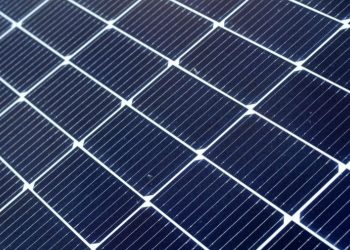Oxford PV announced it has reached a new record for solar panel efficiency. Produced in collaboration with the Fraunhofer Institute for Solar Energy Systems, the Oxford silicon-perovskite-tandem panel achieved a record 25% conversion efficiency, a significant increase on the more typical 24% efficiency of commercial modules.
Oxford PV, a spin-out of the University of Oxford in England, works in the development of perovskite-on-silicon tandem solar cells, which have a theoretical maximum efficiency of over 43%, compared to less than 30% for silicon solar cells.
“Our record-breaking solar panels demonstrate that we are on the cusp of the next solar revolution, which will be delivered, in part, by our tandem cell technology,” said Chris Case, chief technology officer, Oxford PV. “Solar energy is currently among the most cost-effective and sustainable energy sources. Our continuous advancements in technology will further enhance module efficiency – producing more electricity from the same area – and extending their use to all market sectors from residential, commercial through to utility scale.
Oxford PV is scaling up manufacturing this year in Germany to eventually produce its tandem solar cells in high volumes.
“This new world record is a crucial milestone for Oxford PV, proving that our tandem solar cells can deliver record-breaking performance when assembled into solar panels,” said David Ward, CEO, Oxford PV. “It is the first step in what will be a transformative 2024, as we begin to deliver market-ready panels from our factory in Germany and continue our global search for a new high volume manufacturing site which will enable us to bring our technology into the mainstream.”
The Oxford PV silicon-perovskite-tandem solar panel delivered an output of 421 W on an area of 1.68 m2 square meters. For the manufacturing process, the researchers used equipment at Fraunhofer ISE’s Module-TEC that is already used in mass production and optimized the processes for the tandem technology. In order to make precise and reproducible statements about the tandem module’s power, both the perovskite and the silicon cell layers were illuminated by different LED light sources under conditions that are as close as possible to those in which they produce electricity under natural sunlight.
News item from Oxford PV



















